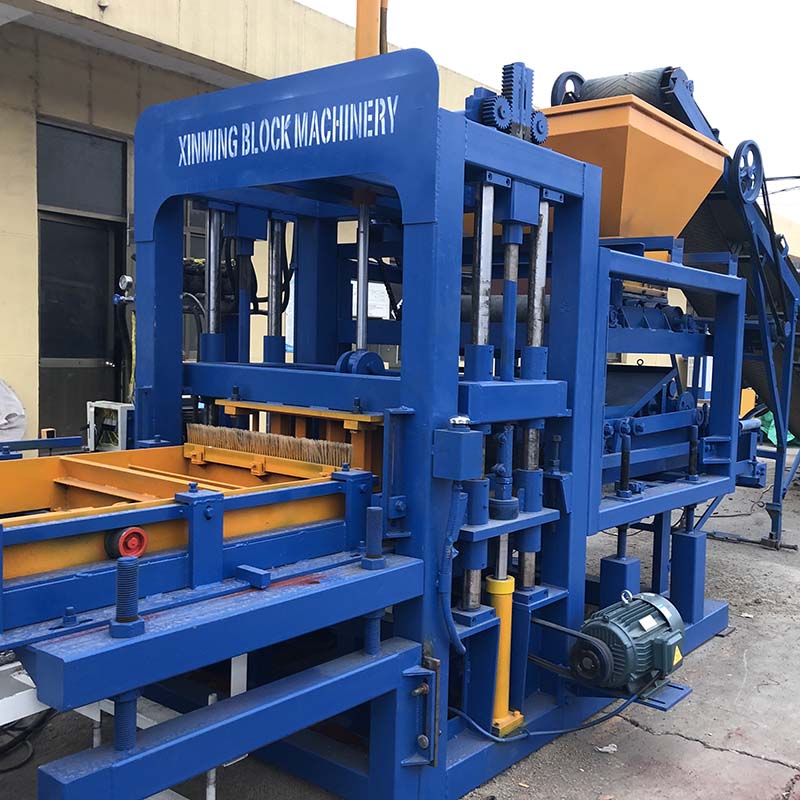
Image source:Aiwei block machine
Introduction
The construction industry in Kenya has been experiencing a remarkable transformation in recent years, driven by urbanization, population growth, and infrastructure development. As the demand for housing, commercial spaces, and infrastructure projects continues to rise, the role of brick making machines has become increasingly significant. These machines have revolutionized the traditional brick production process, offering a range of benefits that contribute to the efficiency, cost-effectiveness, and sustainability of construction projects across the country. In this article, we explore the numerous advantages of using brick making machines for construction in Kenya.
1. Enhanced Production Efficiency
One of the foremost benefits of using brick making machines in Kenyan construction is the significant enhancement of production efficiency. Traditional brick making methods involving manual labor are time-consuming and labor-intensive, leading to slow production rates. In contrast, brick making machines, especially semi-automatic and fully automatic models, can produce a large volume of bricks in a shorter span of time.
Automated brick making machines integrate various processes such as raw material mixing, molding, and curing, minimizing the need for manual intervention. This not only increases the production capacity but also ensures consistency in brick quality, leading to faster completion of construction projects and reduced project timelines.
2. Consistency in Brick Quality
Brick quality is a critical factor in ensuring the structural integrity and longevity of buildings. Manual brick production can result in variations in brick dimensions, density, and strength due to differences in human labor. This inconsistency can lead to weak points in structures, affecting their overall stability.
Brick making machines, especially hydraulic and automated models, ensure uniform compression and molding of raw materials, resulting in bricks of consistent size, shape, and strength. This level of quality control enhances the durability and reliability of constructed buildings, making them better equipped to withstand various environmental conditions.
3. Reduction in Labor Costs
Human labor constitutes a significant portion of the costs in traditional brick production methods. Brick making machines mitigate this cost factor by reducing the dependence on manual labor. While some supervision and technical expertise are required for machine operation and maintenance, the overall labor requirements are considerably lower.
This reduction in labor costs not only contributes to cost savings but also addresses labor shortages in the construction industry. Additionally, it allows construction companies to allocate resources to other aspects of the project, such as skilled trades and project management.
4. Environmental Sustainability
Environmental concerns have become a central focus in modern construction practices. Brick making machines contribute to environmental sustainability in multiple ways. First, some machines allow for the use of alternative, eco-friendly raw materials like stabilized soil and fly ash, reducing the demand for traditional clay.
Furthermore, automated brick making machines can optimize the use of resources by minimizing material wastage. Precise measurements, consistent mixing, and controlled curing processes result in minimal waste compared to traditional methods. Additionally, some brick making machines, such as those using interlocking technology, reduce the need for cement mortar, lowering the carbon footprint of construction projects.
5. Versatility in Brick Design and Types
Brick making machines offer flexibility in designing and producing bricks to meet specific project requirements. Whether it’s interlocking bricks for faster construction, hollow bricks for enhanced insulation, or decorative bricks for aesthetic appeal, these machines can accommodate a variety of designs and types.
The ability to create customized bricks opens up opportunities for architects and builders to experiment with innovative designs, textures, and functionalities. This versatility in brick production contributes to the uniqueness and diversity of buildings, adding value to construction projects.
6. Cost-Effectiveness and Long-Term Savings
While the initial investment in brick making machines may seem substantial, the long-term cost-effectiveness is undeniable. The enhanced production efficiency, reduced labor costs, and minimized material wastage translate into overall cost savings throughout the lifespan of construction projects.
Moreover, the higher quality of bricks produced by machines leads to more durable structures that require fewer repairs and maintenance over time. This translates into long-term savings for property owners, as well as a positive reputation for builders who deliver reliable and robust structures.
7. Empowerment of Local Industries
The adoption of brick making machines can contribute to the growth and empowerment of local industries. By using locally available raw materials and manufacturing machinery, construction companies can support local economies and create job opportunities within the brick making sector.
This empowerment not only stimulates economic growth but also reduces the dependence on imported building materials and technology. It aligns with Kenya’s vision of self-sufficiency in the construction industry and contributes to a more sustainable and resilient national economy.
Conclusion
Brick making machines have emerged as transformative tools in Kenya’s construction industry, offering a multitude of benefits that cater to the evolving needs of the nation. From enhancing production efficiency and ensuring consistent brick quality to reducing labor costs and promoting environmental sustainability, these machines play a crucial role in shaping the future of construction in Kenya. As the industry continues to grow and urbanize, the advantages of using brick making machines will remain pivotal in constructing a built environment that is efficient, sustainable, and capable of meeting the needs of generations to come.
